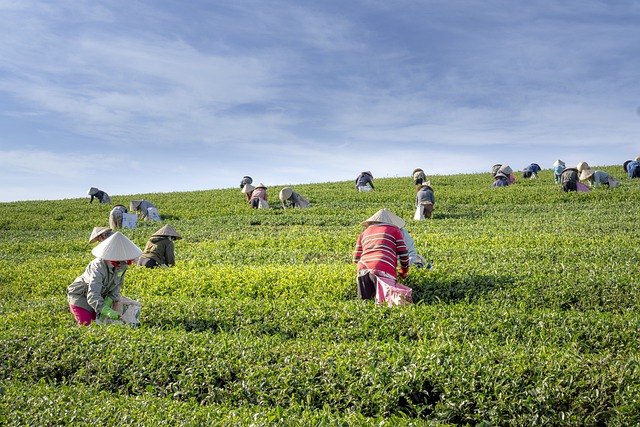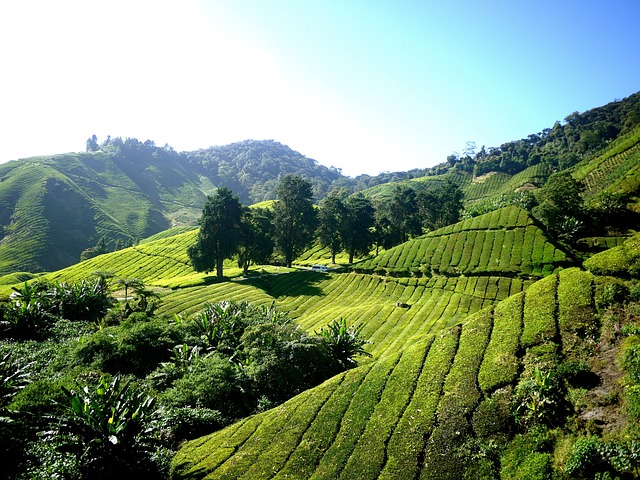Tea farming in Assam has been a major industry for over 200 years. It is an important part of the state’s economy and culture. And it contributes to the livelihoods of many families. Assam tea is the third-most-grown tea in the world, and is known as the “Queen of Teas.”
The average person consumes about three pounds of tea per year, but only about 10% of that is from Assam. Assam grows a lot of tea! It’s the largest producer of black tea in India. Assam has more than 100 different types of teas, including white, green, oolong, and black.
Assam tea farming is a traditional method of growing tea. It involves planting the tea plant in specific areas and cultivating it for a certain period of time to obtain the desired quality of tea.
Assam Tea:
Assam tea is a delicious black tea, world-famous for its big, rich, and malty character. Like lots of teas, it’s made using the leaves of the Camellia Sinensis plant but its growing conditions give it a distinct flavor.
Assam tea is much different than other teas—it’s not brewed like most other teas (to make them stronger). Instead, it’s steeped directly into hot water and then drunk immediately so that all of its flavors remain intact. Because of this unusual process, Assam tea has a very strong flavor (which some people find overpowering) but also has mellow aftertastes that make it easy to drink daily.

Where Is Tea Grown In Assam?
Assam is the largest tea-producing state in India. It has more than 4,000 tea gardens and covers an area of 40,000 sq km. The main regions of tea farming in Assam include Sonitpur, Goalpara, Barpeta, Nagaon, and Sibsagar districts.
The climate of Assam is tropical with a hot summer and a cool winter season. Assam has four types of soil: Upper Alluvial Soil, Sub-Alluvial Soil, Lower Alluvial Soil, and Deccan Trap Clays.
Why Is Assam Famous For Tea Plantations?
Assam is famous for tea plantations because of its climate and soil quality. The temperature in Assam is conducive to growing tea plants. The soil in Assam is also rich in nutrients, which are essential for growing tea plants. Assam is famous for its tea plantations because it’s the only region in India where the climate is suitable for growing tea.
The Assam region has a warm, wet climate that can support tea plants. In fact, Assam was once known as “the land of plenty,” because it had so much fertile soil. The Assam region produces about 60% of India’s total tea exports.
In Which Month Tea Is Grown In Assam?
Assam tea is normally harvested from March to December, just like Darjeeling. Here, higher-quality teas are picked during the first and second flushes, which are two separate growth stages. After this time, all other grades of tea are gathered. Tea farming in Assam starts with the first flush in March and the second flush in June.
How Assam Tea Is Manufactured?
Tea farming in Assam requires meticulous monitoring at every stage, from picking to final shipment, as the process directly influences the final product’s quality. Throughout the second flush, the manufacturer never stops. Within 24 hours, black tea is made from the leaves plucked from that day and within 48 hours it is classified into different grades.

Step 1- Withering:
Two or three times per day, the green leaf enters the factory. It is then immediately thinly spread on a Hessian cloth and set on wire-mesh shelves in the “withering shed,” where it remains until it has lost some of its moisture content and has become flaccid. This process typically takes 12 hours in warm weather, therefore the factory must open at midnight or shortly thereafter.
Step 2- Rolling Or Ctc:
The leaf is gathered and either rolled in Sirocco machines or alternatively placed through a CTC machine, which does what the procedure implies: simultaneously smashes, rips, and curls the leaf.
Step 3- Fermenting:
The crushed tea leaves are thinly placed on trays at a one-inch depth so they can ferment, oxidize, and interact with their own juices. An experienced tea planter must determine the ideal time frame for this process, which can range from an hour to two or more depending on the ambient conditions in place. This process must be closely monitored.
Step4- Drying:
The remaining moisture in the tea leaf is next extracted by transporting it to the drying machines and spreading it thinly on the trays through which hot air is pushed. The finished product is a black tea that is sold in supermarkets. In order to avoid scorching the final product, care must be given throughout the drying process if there is still too much moisture in the tea. The sorting chamber receives the finished tea.
Step 5- Sorting:
The dust falls to the bottom while the tea is mechanically processed through vibrating wire-mesh trays with changing mesh sizes while being fed on conveyors. After being sorted, the tea is placed in tea chests constructed of plywood that are lined with aluminum foil (to maintain flavor) and then transported to Calcutta and London by train or river vessel.
There was intense competition among Assam tea planters to see who was at the top of the ranking for the prices for teas from various tea gardens, which were publicized and constantly watched. The temptation to produce more and better teas was definitely present as tea planters were also paid a commission on earnings. They had to do it to survive.
Top 10 Must-Visited Tea Farming Places In Assam:
Assam, a state in the eastern Himalayas noted for its biodiversity, historical landmarks, and tea plantations is situated along the Brahmaputra River. Here is a list of the top 10 tea farms in Assam that you should consider visiting on your next vacation to this stunning region.
1. Manohari Tea Estate:
Manohari Tea Estate is the first to appear on this list of the top tea estates in Assam. This renowned tea estate is located in the upper area of Assam at an elevation of 390 feet above sea level along the Indian-Burmese border and has been serving fresh cups of tea since the British era.
2. Assamica Agro Organic Farm:
Through the production of natural and ethical tea leaves, the Assamica Agro Organic Farm has cleansed the experience of drinking tea. The farm cultivates the tea, which makes a nutritious cup. This particular tea is devoid of chemicals and pesticides. However, among all the Assam tea estates, this organic farm produces delicious brewed tea leaves devoid of chemicals. The sector also prioritizes enhancing tea farmers’ quality of life.
3. Sonapur Tea Estate:
You can travel to Guwahati, which is regarded as the Northeast’s capital, via the Sonapur Tea Estate. This tea estate was started by the British in early 1924 and is now owned by three generations of the Bhaduri family.
This plantation began its adventure by producing Orthodox tea in the early years, spreading the robust brew of their premium CTC tea. This Assam tea farm has built a reputation over the years among significant businesses like Tata Tea and Levers.
4. Ghograjan Tea Estate:
This tea estate was established in the early 1930s when the first seedlings were planted alongside the Ghagra river, carrying on the legacy of the fifth generation. This river gave rise to the name “Ghograjan,” which in the local dialect means “little river.” This 350-acre tea estate has built a reputation for excellence in producing CTC and the best orthodox tea in the area.
5. Mangalam Tea Estate:
The area next to a government reserve forest that is home to a variety of species has been purchased by the tea estate. The tea estate is 117.99 hectares and is located across the Towkok river. The tea plantation is a section of the Towkok tea garden, which Jayshree Tea Industries took over in 1955. Tea estate has consistently produced high-quality tea.
6. Khongea Tea Estate:
The Khongea tea estate came into existence around 1949. The khong tea estate is located in Assam, India. It’s the largest tea estate in Assam, with more than 200 hectares of land under cultivation. The tea is grown using organic practices and traditional methods.
7. Harmutty Tea Estate:
Harmutty Tea Estate is a tea estate in the state of Assam, India. It was established in 1921 and provides an important source of income for the people of Assam. The plantation covers an area of 650 hectares, and harvests are traditionally made in May and October.
8. Beesakopie Tea Estate:
Beesakopie Tea Estate is situated in the Karbi Anglong district of Assam. It is a small tea estate, which was founded in 1890 by Colonel Royston Gurdon, a British officer of the East India Company. It was later inherited by his son, who made it into one of the most famous tea estates in Assam.
Bee Sakopie is a tea estate located in Assam. It was established in 1955 and produces a wide range of teas. The estate is home to over 200 varieties of tea bushes, many of which are rare and have been cultivated for over 100 years.
Conclusion:
Tea farming in Assam is very important for the people of the state, especially for the local economy. It helps them to earn their living and also contributes to the development of Assam. One can see that tea plantations are spread all over Assam and this is one of its primary industries.
The tea industry has been increasing steadily and there is no doubt that it will continue growing further in the near future.
Book your Assam tour package with TravelTriangle today for a quiet getaway amidst Assam’s tea plantations if you wish to sip on a strong cup of tea while enjoying the tea gardens.
